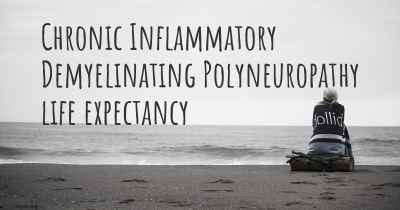What are the best treatments for Chronic Inflammatory Demyelinating Polyneuropathy?
See the best treatments for Chronic Inflammatory Demyelinating Polyneuropathy here

Treatments for Chronic Inflammatory Demyelinating Polyneuropathy (CIDP)
Chronic Inflammatory Demyelinating Polyneuropathy (CIDP) is a rare neurological disorder characterized by chronic inflammation of the peripheral nerves. It leads to progressive weakness and impaired sensory function in the limbs. CIDP can significantly impact a person's quality of life, but fortunately, there are several effective treatments available to manage the condition.
1. Intravenous Immunoglobulin (IVIG) Therapy
IVIG therapy is considered the first-line treatment for CIDP. It involves infusing high doses of immunoglobulins, which are antibodies derived from donated blood plasma, into the patient's bloodstream. These immunoglobulins help modulate the immune response and reduce inflammation in the peripheral nerves. IVIG therapy has shown significant efficacy in improving muscle strength, reducing disability, and relieving pain in CIDP patients.
2. Corticosteroids
Corticosteroids such as prednisone or methylprednisolone are commonly used as an initial treatment for CIDP. These powerful anti-inflammatory drugs help suppress the immune system and reduce nerve inflammation. Corticosteroids can provide rapid relief of symptoms, but their long-term use may be associated with side effects. Therefore, they are often used in combination with other treatments or as a bridge therapy while waiting for the effects of other medications to take effect.
3. Plasma Exchange (Plasmapheresis)
Plasma exchange involves removing the patient's blood plasma, which contains the harmful antibodies causing nerve damage, and replacing it with donor plasma or a substitute solution. This procedure helps remove the inflammatory substances from the bloodstream and can provide temporary relief from CIDP symptoms. Plasma exchange is often used in severe cases or when IVIG therapy is not well-tolerated or ineffective.
4. Immunosuppressive Medications
In cases where IVIG therapy or corticosteroids alone are insufficient, immunosuppressive medications may be prescribed. Drugs such as azathioprine, mycophenolate mofetil, or methotrexate work by suppressing the immune system to reduce inflammation. These medications are typically used as long-term maintenance therapy to prevent disease progression and relapses.
5. Monoclonal Antibodies
Monoclonal antibodies are a newer class of medications that target specific components of the immune system involved in CIDP. Rituximab, for example, selectively depletes B cells, which play a role in the immune response. Other monoclonal antibodies, such as eculizumab, target different immune pathways. These medications are usually reserved for patients who do not respond to other treatments or have severe disease.
6. Physical Therapy
Physical therapy plays a crucial role in the management of CIDP. It focuses on improving muscle strength, coordination, and mobility. A physical therapist can design a personalized exercise program to address specific weaknesses and help patients regain function. Additionally, occupational therapy may be beneficial in adapting daily activities to accommodate any physical limitations.
7. Pain Management
Pain management is an essential aspect of CIDP treatment, as many patients experience neuropathic pain. Medications such as gabapentin, pregabalin, or tricyclic antidepressants can help alleviate pain symptoms. Additionally, alternative therapies like transcutaneous electrical nerve stimulation (TENS) or acupuncture may provide relief for some individuals.
8. Supportive Care
Supportive care is crucial for individuals with CIDP to manage their condition effectively. This may include assistive devices such as braces, canes, or wheelchairs to aid mobility. Regular follow-up appointments with healthcare providers, including neurologists and physical therapists, are essential to monitor disease progression and adjust treatment plans as needed.
It is important to note that the choice of treatment for CIDP depends on various factors, including disease severity, individual response, and potential side effects. Treatment plans are often tailored to each patient's specific needs, and a multidisciplinary approach involving neurologists, immunologists, and rehabilitation specialists is typically employed.
Disclaimer: The information provided here is for informational purposes only and should not be considered as medical advice. Please consult with a healthcare professional for personalized diagnosis and treatment options.








